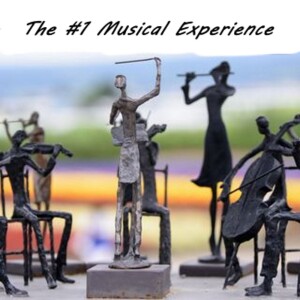
Why We Should Expose Our Kids To Classical Music https://ourtownlive.net #herbw79
The term "baroque" is generally used by music historians to describe a broad range of styles from a wide geographic region, mostly in Europe, composed over a period of approximately 150 years. Although it was long thought that the word as a critical term was first applied to architecture, in fact it appears earlier in reference to music, in an anonymous, satirical review of the première in October 1733 of Rameau's Hippolyte et Aricie, printed in the Mercure de France in May 1734. The critic implied that the novelty in this opera was "du barocque", complaining that the music lacked coherent melody, was filled with unremitting dissonances, constantly changed key and meter, and speedily ran through every compositional device.
Jean-Jacques Rousseau, who was a musician and composer as well as philosopher, wrote in 1768 in the Encyclopédie: "Baroque music is that in which the harmony is confused, and loaded with modulations and dissonances. The singing is harsh and unnatural, the intonation difficult, and the movement limited. It appears that term comes from the word 'baroco' used by logicians." Rousseau was referring to the philosophical term baroco, in use since the 13th century to describe a type of elaborate and, for some, unnecessarily complicated academic argument.
The systematic application by historians of the term "baroque" to music of this period is a relatively recent development. In 1919, Curt Sachs became the first to apply the five characteristics of Heinrich Wölfflin's theory of the Baroque systematically to music. Critics were quick to question the attempt to transpose Wölfflin's categories to music, however, and in the second quarter of the 20th century independent attempts were made by Manfred Bukofzer (in Germany and, after his immigration, in America) and by Suzanne Clercx-Lejeune (in Belgium) to use autonomous, technical analysis rather than comparative abstractions, in order to avoid the adaptation of theories based on the plastic arts and literature to music. All of these efforts resulted in appreciable disagreement about time boundaries of the period, especially concerning when it began. In English the term acquired currency only in the 1940s, in the writings of Bukofzer and Paul Henry Lang.
As late as 1960, there was still considerable dispute in academic circles, particularly in France and Britain, whether it was meaningful to lump together music as diverse as that of Jacopo Peri, Domenico Scarlatti, and Johann Sebastian Bach under a single rubric. Nevertheless, the term has become widely used and accepted for this broad range of music. It may be helpful to distinguish the Baroque from both the preceding (Renaissance) and following (Classical) periods of musical history. Get bonus content on Patreon
view more
The term "baroque" is generally used by music historians to describe a broad range of styles from a wide geographic region, mostly in Europe, composed over a period of approximately 150 years. Although it was long thought that the word as a critical term was first applied to architecture, in fact it appears earlier in reference to music, in an anonymous, satirical review of the première in October 1733 of Rameau's Hippolyte et Aricie, printed in the Mercure de France in May 1734. The critic implied that the novelty in this opera was "du barocque", complaining that the music lacked coherent melody, was filled with unremitting dissonances, constantly changed key and meter, and speedily ran through every compositional device.
Jean-Jacques Rousseau, who was a musician and composer as well as philosopher, wrote in 1768 in the Encyclopédie: "Baroque music is that in which the harmony is confused, and loaded with modulations and dissonances. The singing is harsh and unnatural, the intonation difficult, and the movement limited. It appears that term comes from the word 'baroco' used by logicians." Rousseau was referring to the philosophical term baroco, in use since the 13th century to describe a type of elaborate and, for some, unnecessarily complicated academic argument.
The systematic application by historians of the term "baroque" to music of this period is a relatively recent development. In 1919, Curt Sachs became the first to apply the five characteristics of Heinrich Wölfflin's theory of the Baroque systematically to music. Critics were quick to question the attempt to transpose Wölfflin's categories to music, however, and in the second quarter of the 20th century independent attempts were made by Manfred Bukofzer (in Germany and, after his immigration, in America) and by Suzanne Clercx-Lejeune (in Belgium) to use autonomous, technical analysis rather than comparative abstractions, in order to avoid the adaptation of theories based on the plastic arts and literature to music. All of these efforts resulted in appreciable disagreement about time boundaries of the period, especially concerning when it began. In English the term acquired currency only in the 1940s, in the writings of Bukofzer and Paul Henry Lang.
As late as 1960, there was still considerable dispute in academic circles, particularly in France and Britain, whether it was meaningful to lump together music as diverse as that of Jacopo Peri, Domenico Scarlatti, and Johann Sebastian Bach under a single rubric. Nevertheless, the term has become widely used and accepted for this broad range of music. It may be helpful to distinguish the Baroque from both the preceding (Renaissance) and following (Classical) periods of musical history. Get bonus content on Patreon
Hosted on Acast. See acast.com/privacy for more information.
More Episodes
Bach Prelude from Cello suite n. 4
 2021-02-03
2021-02-03
 2021-02-03
2021-02-03
Swan Lake Op.20 - Act III Concl, Allegro
 2021-01-26
2021-01-26
 2021-01-26
2021-01-26
Tchaikovsky 1812 Overture, Op. 49
 2021-01-26
2021-01-26
 2021-01-26
2021-01-26
Piano Sonata no. 16 'Facile', K. 545
 2021-01-25
2021-01-25
 2021-01-25
2021-01-25
0123456789
Create your
podcast in
minutes
- Full-featured podcast site
- Unlimited storage and bandwidth
- Comprehensive podcast stats
- Distribute to Apple Podcasts, Spotify, and more
- Make money with your podcast
It is Free
- Privacy Policy
- Cookie Policy
- Terms of Use
- Consent Preferences
- Copyright © 2015-2024 Podbean.com






